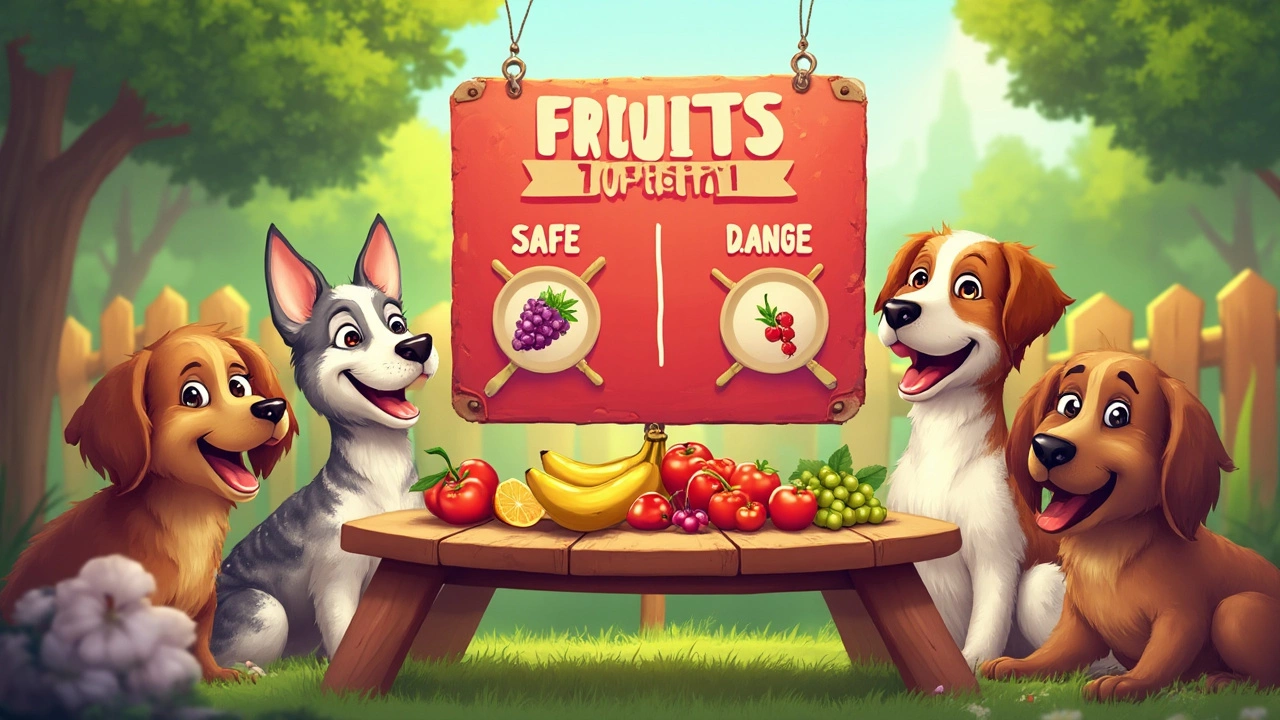Fruit for Dogs: Safe Choices, Benefits & How to Serve
Did you hear that a slice of apple can be a tasty treat for your dog? Fresh fruit isn’t just for humans – many varieties are safe, nutritious, and loved by pups. Knowing which fruits to pick and how to serve them can turn snack time into a health boost.
Top Safe Fruits Your Dog Will Love
Here are the most dog‑friendly fruits, listed with the main benefits:
- Apple (no core or seeds) – adds fiber, vitamin C, and a crunchy texture that helps clean teeth.
- Blueberries – packed with antioxidants that support brain health.
- Banana – offers potassium and quick energy, perfect for a post‑walk bite.
- Watermelon (seedless) – high water content keeps dogs hydrated in summer.
- Pineapple – provides bromelain, which can aid digestion, but only a few small chunks.
- Strawberries – full of fiber and vitamin C; they also help control blood sugar.
Each fruit should be given in bite‑size pieces, especially for small dogs. Start with a few tiny bites and watch how your pet reacts.
Fruits to Skip or Serve With Caution
Not every fruit is safe. Some contain toxins, high sugar, or seeds that can cause blockages:
- Grapes and raisins – can cause kidney failure in dogs.
- Citrus (oranges, lemons, limes) – the acidity can upset stomachs.
- Cherries – pits contain cyanide; the flesh can be too sugary.
- Avocado – the pit and skin have persin, which can be harmful.
- Peaches and plums – pits are a choking hazard and contain cyanide.
If you’re unsure about a fruit, check with your vet before sharing.
When offering fruit, always wash it thoroughly. Remove any stems, pits, or seeds, and cut it into manageable pieces. For very soft fruits like banana, mash a small spoonful and mix it into your dog’s regular food.
Keep portions modest. Even safe fruits add sugar, so a few pieces a day are enough. As a rule of thumb, fruit should never make up more than 10% of your dog’s total calories.
Some dogs may be allergic or have sensitivities. Look for signs like itching, vomiting, or diarrhea after a new fruit. If any of these appear, stop feeding the fruit and consult your vet.
Using fruit as a training treat works well because the sweet taste is motivating but the low calorie load won’t ruin your dog’s diet. Freeze small blueberry pieces for a cool summer reward or hide a banana bite inside a puzzle toy to keep your pup busy.
Remember, fresh fruit is a supplement, not a replacement for balanced dog food. It can fill nutritional gaps, add variety, and make snack time fun, but the bulk of your dog’s diet should still come from high‑quality kibble or wet food.
In short, pick safe fruits, serve them in tiny portions, and watch your dog’s reaction. With the right choices, fruit becomes a simple, tasty way to boost health and keep your furry friend wagging for more.

What Fruits Are Unsafe for Dogs to Eat?
Ever wondered which fruits are off-limits for your furry friend? While many fruits are healthy for dogs, some can cause serious harm. This article uncovers the fruits that should never find their way into your dog's diet. Learn what makes these fruits dangerous and how to keep your canine companion safe. Stay informed and ensure your dog stays happy and healthy.
read more



